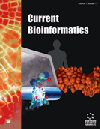- Home
- A-Z Publications
- Current Bioinformatics
- Previous Issues
- Volume 5, Issue 1, 2010
Current Bioinformatics - Volume 5, Issue 1, 2010
Volume 5, Issue 1, 2010
-
-
Finding Recurrent Copy Number Alteration Regions: A Review of Methods
More LessAuthors: Oscar M. Rueda and Ramon Diaz-UriarteCopy number alterations (CNA) in genomic DNA are linked to a variety of human diseases. Although many methods have been developed to analyze data from a single subject, disease-critical genes are more likely to be found in regions that are common or recurrent among diseased subjects. Unfortunately, finding recurrent CNA regions remains a challenge. We review existing methods for the identification of recurre Read More
-
-
-
Computational Models and Algorithms for the Single Individual Haplotyping Problem
More LessAuthors: Minzhu Xie, Jianxin Wang, Jianer Chen, Jingli Wu and Xucong LiuSingle nucleotide polymorphism (SNP) is the predominant form of human genetic variation, and is widely used in disease association studies. Haplotype, i.e. a sequence of SNPs on a chromosome, can provide more information than single SNPs. Haplotype-based analysis is more powerful in complex disease association studies than SNP-based methods. However, it is much difficult to determine haplotypes using only biologi Read More
-
-
-
On the Comparison of Classifiers for Microarray Data
More LessAuthors: Blaise Hanczar and Edward R. DoughertyThe aim of many microarray experiments is to build discriminatory diagnosis and prognosis models. A large number of supervised methods have been proposed in literature for microarray-based classification. Model comparison, which is based on the classification error estimation, is a critical issue. Previous studies have shown that error estimation is unreliable in high-dimensional small-sample settings. This leads naturally to q Read More
-
-
-
Phylogenetic Trees in Bioinformatics
More LessBy Tom BurrGenetic data is often used to infer evolutionary relationships among a collection of viruses, bacteria, animal or plant species, or other operational taxonomic units (OTU). A phylogenetic tree depicts such relationships and provides a visual representation of the estimated branching order of the OTUs. Tree estimation is unique for several reasons, including the types of data used to represent each OTU; the use of probabilistic nuc Read More
-
-
-
Performance of Error Estimators for Classification
More LessAuthors: Edward R. Dougherty, Chao Sima, Hua, Blaise Hanczar and Ulisses M. Braga-NetoClassification in bioinformatics often suffers from small samples in conjunction with large numbers of features, which makes error estimation problematic. When a sample is small, there is insufficient data to split the sample and the same data are used for both classifier design and error estimation. Error estimation can suffer from high variance, bias, or both. The problem of choosing a suitable error estimator is exacerba Read More
-
-
-
Integration of Diverse Research Methods to Analyze and Engineer Ca2+- Binding Proteins: From Prediction to Production
More LessAuthors: Michael Kirberger, Xue Wang, Kun Zhao, Shen Tang, Guantao Chen and Jenny J. YangIn recent years, increasingly sophisticated computational and bioinformatics tools have evolved for the analyses of protein structure, function, ligand interactions, modeling and energetics. This includes the development of algorithms to recursively evaluate side-chain rotamer permutations, identify regions in a 3D structure that meet some set of search parameters, calculate and minimize energy values, and provide high-res Read More
-
-
-
MicroRNA Target Prediction: Problems and Possible Solutions
More LessAuthors: Peter M. Szabo, Zsofia Tombol, Viktor Molnar, Andras Falus, Karoly Racz and Peter IgazMicroRNAs (miRNA) are small non-coding RNA molecules involved in the posttranscriptional regulation of gene expression. miRNAs bind specifically to the 3' untranslated region of messenger RNA (mRNA) molecules and induce translational repression or mRNA degradation. Potential miRNA targets can be predicted by various computational algorithms that take several parameters into consideration and calculate probability Read More
-
Volumes & issues
-
Volume 20 (2025)
-
Volume 19 (2024)
-
Volume 18 (2023)
-
Volume 17 (2022)
-
Volume 16 (2021)
-
Volume 15 (2020)
-
Volume 14 (2019)
-
Volume 13 (2018)
-
Volume 12 (2017)
-
Volume 11 (2016)
-
Volume 10 (2015)
-
Volume 9 (2014)
-
Volume 8 (2013)
-
Volume 7 (2012)
-
Volume 6 (2011)
-
Volume 5 (2010)
-
Volume 4 (2009)
-
Volume 3 (2008)
-
Volume 2 (2007)
-
Volume 1 (2006)
Most Read This Month
Article
content/journals/cbio
Journal
10
5
false
en


